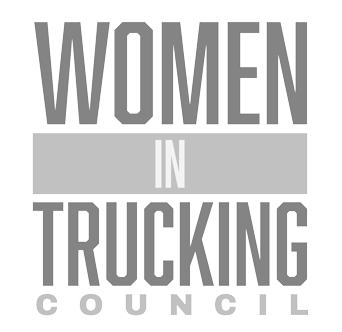Understanding the Power of Freight Consolidation
In today’s competitive logistics landscape, businesses are constantly seeking ways to optimize their supply chains, reduce costs, and improve efficiency. One powerful strategy gaining significant traction, especially in key regional hubs, is freight consolidation. Freight consolidation involves combining multiple smaller shipments from different shippers into a single, larger shipment. This process is particularly beneficial for businesses that frequently move less-than-truckload (LTL) shipments. Instead of paying for dedicated trucks for each small load, consolidation allows these shipments to be combined, filling up a truck and thereby reducing the cost per unit shipped.
The core idea is simple: leverage shared space and resources to achieve economies of scale. By consolidating freight, businesses can avoid the higher rates associated with LTL shipping and move closer to full truckload (FTL) pricing, even for their smaller volumes. This approach requires careful planning and coordination, often involving a centralized location where shipments are collected, sorted, and combined before being sent to their final destinations. Implementing a strategic southeast freight consolidation warehousing plan can significantly impact a company’s bottom line and operational effectiveness.
Why the Southeast is a Strategic Hub for Logistics
The southeastern United States has emerged as a crucial nexus for domestic and international trade. Its strategic geographical location offers unparalleled access to major population centers, manufacturing hubs, and vital transportation infrastructure, including deep-water ports, extensive highway networks, and growing intermodal capabilities. States like North Carolina, South Carolina, Georgia, and others boast a combination of favorable business climates, a skilled workforce, and significant investments in logistics infrastructure.
Major ports along the Atlantic coast, such as the Port of Savannah, the Port of Charleston, and others, handle vast volumes of container traffic, making the region a primary gateway for imported goods. This influx of goods, coupled with robust domestic manufacturing and distribution activities, creates a high density of freight movement. For businesses looking to optimize distribution to or from this dynamic region, leveraging the advantages of the southeast’s logistics ecosystem, particularly through services like strategic southeast freight consolidation warehousing, is essential for maintaining a competitive edge.
The Role of Warehousing in Modern Supply Chains
Warehousing is far more than just storage; it is a critical component of a modern, efficient supply chain. Strategic warehousing locations serve as dynamic points for inventory management, value-added services, and optimizing freight flow. In the context of consolidation, a warehouse acts as the central point where shipments from various origins are received, processed, and combined based on their final destinations.
Modern warehouses are equipped with advanced technology, such as Warehouse Management Systems (WMS), that enable precise tracking, sorting, and management of inventory and shipments. They can also offer services like cross-docking, kitting, labeling, and quality control, further enhancing supply chain efficiency. A well-placed warehouse, especially one designed for consolidation activities in a high-traffic area like the Southeast, is indispensable for businesses aiming to streamline their logistics and reduce transportation costs.
Unlocking Efficiency with Strategic Southeast Freight Consolidation Warehousing
Combining the power of freight consolidation with the strategic advantages of the Southeast creates a potent recipe for supply chain optimization. Strategic southeast freight consolidation warehousing involves establishing or partnering with facilities in key locations across the region to serve as consolidation points. This allows businesses shipping goods into or out of the Southeast to pool their LTL shipments.
Instead of sending multiple partially filled trucks from various origins, shipments are directed to a regional consolidation warehouse. Here, they are combined with other shipments heading to similar destinations. This results in fewer, fuller truckloads departing the warehouse, leading to significant reductions in transportation costs and environmental impact. This strategic approach is particularly effective for companies distributing goods across the Southeast or receiving components from multiple suppliers in the region.
Key Benefits: Cost Savings and Reduced Transit Times
Implementing strategic southeast freight consolidation warehousing yields numerous tangible benefits for businesses. Perhaps the most significant is cost reduction. By consolidating multiple LTL shipments into FTL or near-FTL loads, companies can drastically lower their per-unit transportation expenses. The cost of a full truckload is considerably less than the combined cost of several LTL shipments covering the same volume or weight.
Beyond direct freight costs, consolidation also reduces handling fees associated with LTL shipping, such as liftgate services or reclassification fees. Furthermore, by optimizing routes and minimizing the number of stops, consolidation can lead to reduced transit times and more predictable delivery schedules compared to traditional LTL networks, which often involve multiple transfers.
A well-executed consolidation strategy can also lead to less damage and loss of goods, as shipments are handled fewer times throughout the transportation process. This contributes to lower insurance costs and fewer customer claims. For insights into broader logistics optimizations, consider exploring topics like the benefits of a hybrid asset and brokerage model.
Improving Service Levels Through Consolidated Operations
While cost savings are a primary driver, strategic southeast freight consolidation warehousing also plays a crucial role in enhancing customer service levels. Consolidated shipments often move more directly and with fewer intermediate stops than typical LTL freight. This streamlined movement can lead to faster, more consistent delivery times, which is highly valued by customers.
With fewer shipments and more optimized routes, there is also a reduced chance of errors, delays, or damage. This reliability translates into higher customer satisfaction. Furthermore, consolidation centers can provide value-added services like customized packaging or final-mile delivery arrangements, offering a more complete and tailored logistics solution for customers in the Southeast. Better visibility into consolidated shipments also allows for improved communication with customers regarding delivery status.
Choosing the Right Partner for Southeast Consolidation Services
Successfully implementing a strategic southeast freight consolidation warehousing strategy often depends on partnering with the right logistics provider. An ideal partner will have a strong presence in the Southeast, with strategically located warehousing and cross-docking facilities. They should possess the infrastructure, technology, and expertise to efficiently handle the consolidation process, including receiving, sorting, combining, and dispatching shipments.
Key factors to consider when selecting a partner include:
- Facility Locations: Are their warehouses optimally located to serve your origin and destination points in the Southeast?
- Technology: Do they utilize modern WMS and transportation management systems (TMS) that offer visibility and integration capabilities? For more on technology, see guides to real-time freight visibility and API integration.
- Experience: Do they have a proven track record in freight consolidation and handling various types of freight?
- Customer Service: Do they offer responsive communication and support?
- Flexibility: Can they adapt their services to meet your specific business needs and volume fluctuations?
A collaborative partnership with a reliable provider is essential for unlocking the full potential of strategic southeast freight consolidation warehousing.
Maximizing Your Supply Chain Potential in the Southeast
The Southeast offers tremendous opportunities for businesses looking to optimize their distribution networks. By strategically leveraging freight consolidation and warehousing in this key region, companies can achieve significant cost savings, improve operational efficiency, and enhance service levels. It requires careful planning, the right infrastructure, and often, the support of an experienced logistics partner.
Investing in strategic southeast freight consolidation warehousing is not just about reducing transportation costs in the short term; it’s about building a more resilient, efficient, and competitive supply chain for the future. As the Southeast continues to grow as a major economic and logistics hub, businesses that effectively utilize consolidation strategies will be well-positioned for long-term success. For deeper dives into regional logistics challenges and opportunities, consider exploring external resources on topics like Southeast supply chain growth or information from industry associations focused on the region.
Have questions? Contact us here.














